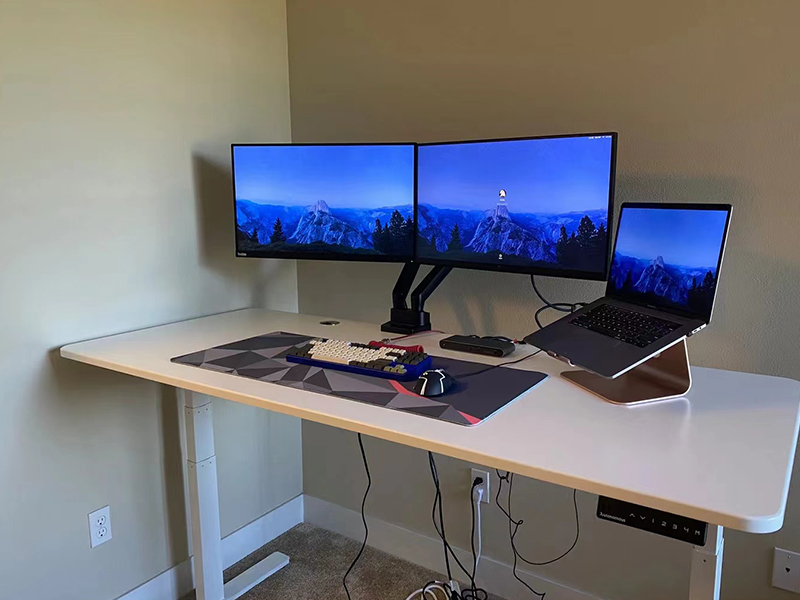
Introduction
Standing desks have gained popularity as an ergonomic solution for reducing the health risks associated with prolonged sitting. If you're considering transitioning to a standing desk, you may be wondering whether to DIY a standing desk or purchase a pre-made one. Each option has its pros and cons, which we’ll explore in this article to help you make an informed decision.
DIY Standing Desk
Pros:
-
Cost-Effective:
-
Budget-Friendly: Building your own standing desk can be much cheaper than buying a pre-made one. You can use materials you already have or purchase affordable components.
-
Customizable Budget: You have control over how much you spend, making it easier to stick to a budget.
-
Customization:
-
Personalized Design: You can design the desk to fit your specific needs and preferences, such as exact dimensions, materials, and features.
-
Unique Features: Add custom features like extra shelves, cable management, or unique aesthetic elements that suit your workspace.
-
Sense of Accomplishment:
-
Satisfaction: Building your own desk can be a rewarding project, providing a sense of pride and accomplishment.
Cons:
-
Time-Consuming:
-
Labor Intensive: DIY projects can be time-consuming, requiring planning, sourcing materials, and actual construction time.
-
Skill Requirement: Depending on the complexity of your design, it may require woodworking or other skills that not everyone possesses.
-
Potential for Mistakes:
-
Lack of Precision: Without professional tools and experience, it can be challenging to achieve the same level of precision and finish as a manufactured desk.
-
Durability Concerns: Improper construction or use of subpar materials can lead to issues with stability and longevity.
-
Limited Features:
-
Basic Functionality: DIY desks might lack advanced features like electric height adjustment, programmable settings, or integrated cable management found in many commercial desks.
Buying a Standing Desk
Pros:
-
Convenience:
-
Ready to Use: Pre-made desks are ready to use right out of the box with minimal assembly required.
-
Time-Saving: Save time and effort that would otherwise be spent on designing and building a desk.
-
Advanced Features:
-
High-Tech Options: Many standing desks come with advanced features like electric height adjustment, memory presets, and integrated cable management.
-
Ergonomic Design: Professionally designed desks are optimized for ergonomics and durability.
-
Reliability and Warranty:
-
Quality Assurance: Purchased desks typically come with warranties and customer support, providing peace of mind.
-
Consistent Quality: Manufactured desks are built to meet certain standards, ensuring consistent quality and performance.
Cons:
-
Higher Cost:
-
Expense: High-quality standing desks can be expensive, potentially costing several hundred dollars or more.
-
Ongoing Costs: There might be additional costs for shipping, assembly, or accessories.
-
Limited Customization:
-
Fixed Designs: While there are many options available, you might not find a desk that perfectly matches your specific needs and preferences.
-
Less Personal Touch: Buying a desk doesn’t provide the same level of personalization and unique character as building one yourself.
Conclusion
Choosing between a DIY standing desk and buying one ultimately depends on your priorities and resources.
-
If you value customization, enjoy hands-on projects, and are looking to save money, DIY might be the way to go. This option allows you to create a desk tailored exactly to your needs, though it requires time, effort, and some level of skill.
-
If you prefer convenience, advanced features, and professional quality, purchasing a standing desk is likely the better choice. While it may be more expensive, it offers reliability, ease of use, and ergonomic benefits that are hard to match with a DIY setup.
Consider your budget, time availability, and specific requirements to determine which option aligns best with your goals for a healthier, more ergonomic workspace.
